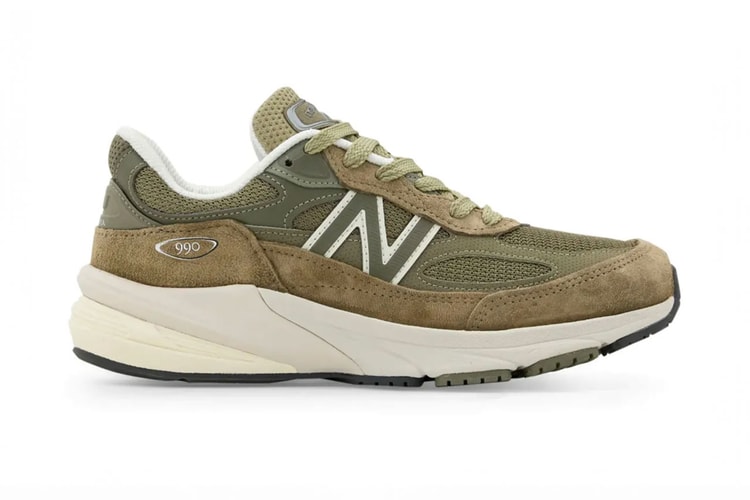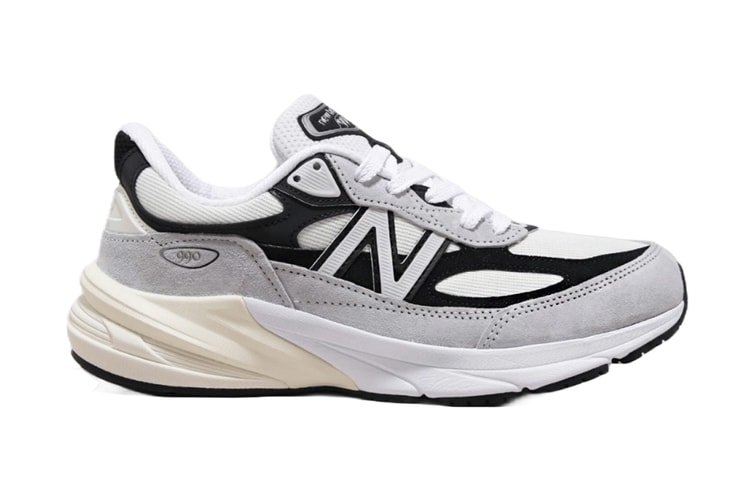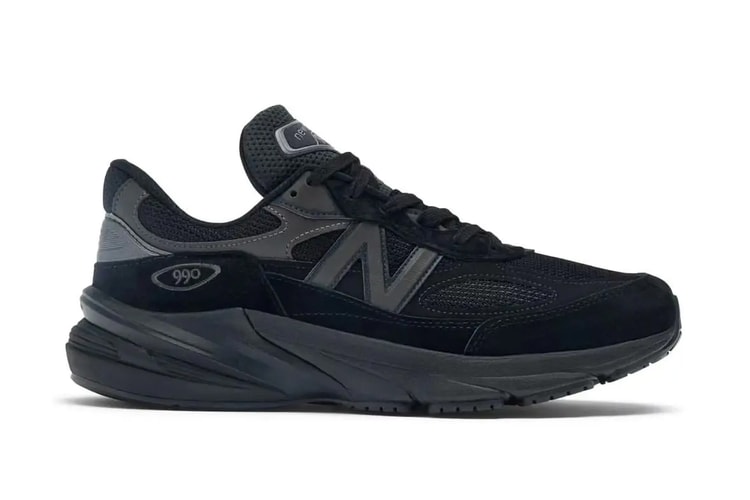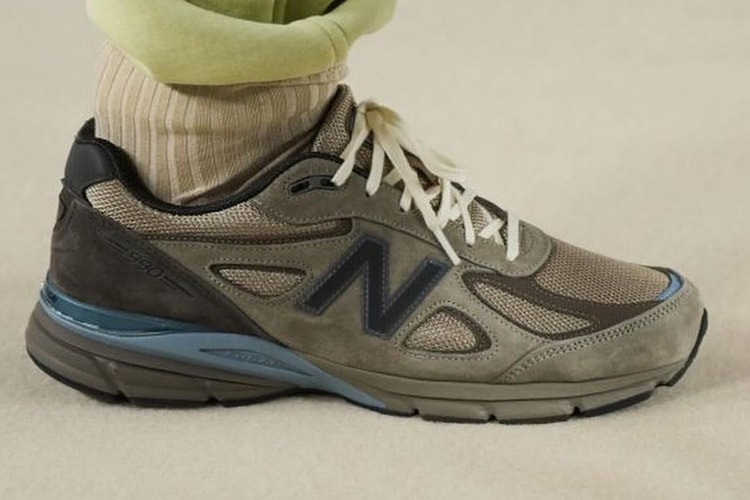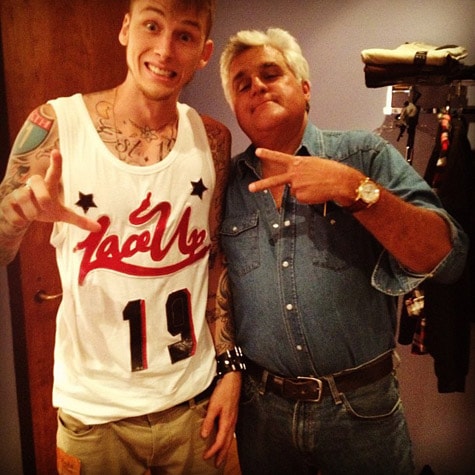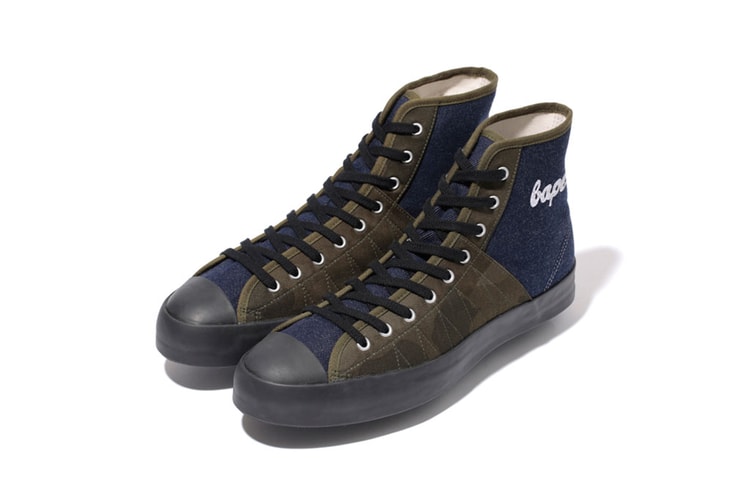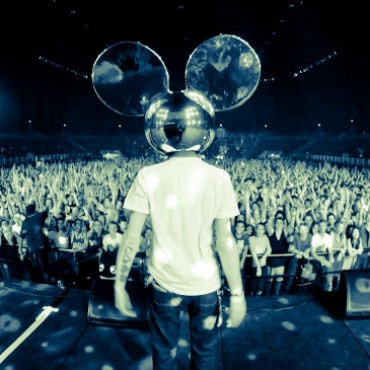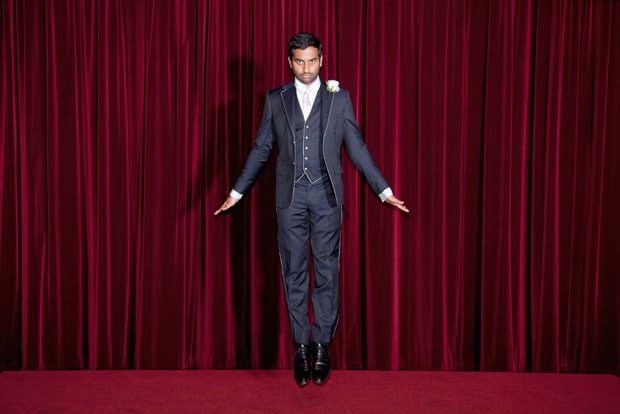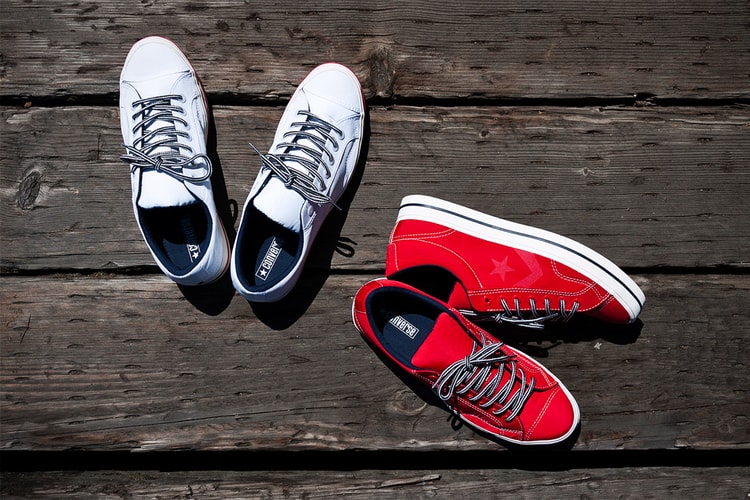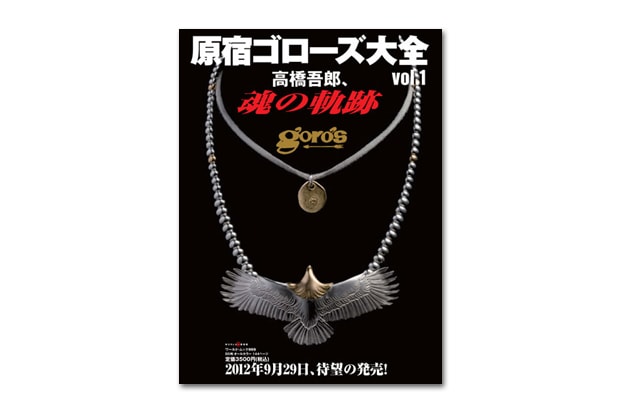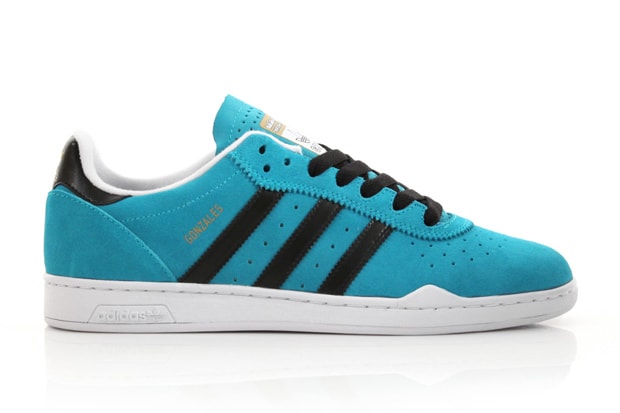"Excellence on Camera" with Stebs Schinnerer for New Balance 990
With the success of New Balance’s domestic approach to manufacturing in its “Made in USA”
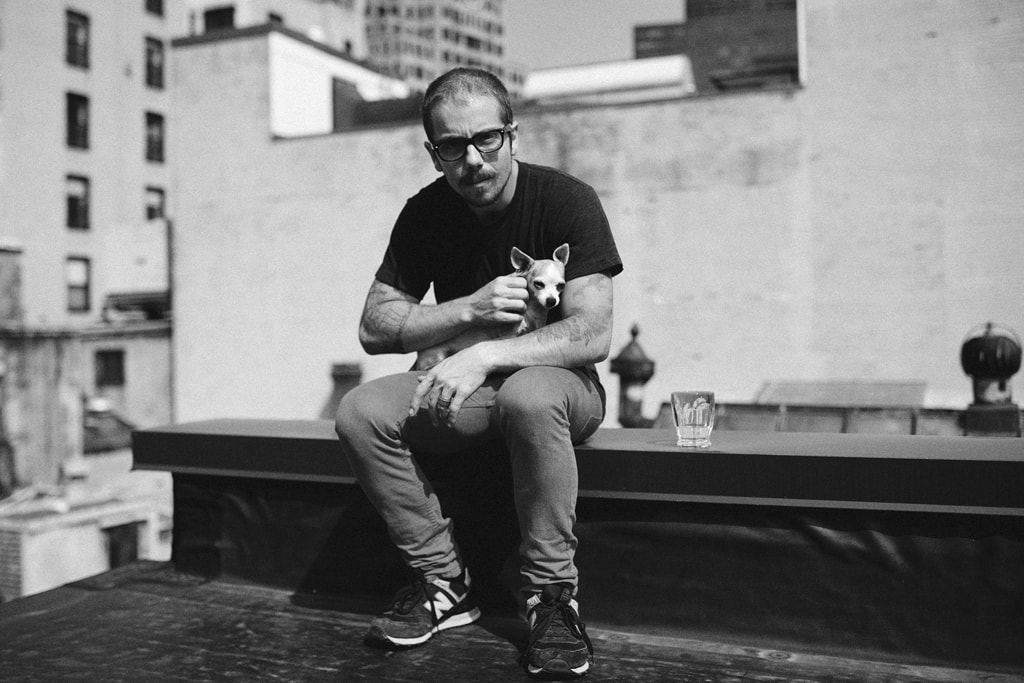
With the success of New Balance‘s domestic approach to manufacturing in its “Made in USA” collection, footwear enthusiasts were given an opportunity to embrace some of the most iconic sneakers today, but with an added personal stateside touch. This gave consumers a chance to support local factories and at the same time take pride in something that was made on home soil. In the recent New Balance 990 “Craftsmanship Redefined” video, viewers were given an exclusive look into the Norridgewock manufacturing facilities, as well as each of the persons behind each shoe. While the video gave an astonishingly accurate portrayal of the efforts that go in to each process, we often wonder who the person behind the lens is and how they were they able to retain such a personal aesthetic to the body of work.
We recently sat down with Stebs Schinnerer, the face behind Paper Fortress Films, his experience in making the feature and just what he gained from the encounter. Working with brands such as Clarks Originals, RAM, Jack Daniels and most recently New Balance, Stebs humbly divulges his past experiences, the importance of aligning yourself with good people, and even elaborates on the significance of making mistakes.
Can you talk us through your story, how you “got into” videography and what first started the journey for you?
Very early on, I was fascinated by my grandfather’s enormous VHS camera that I tethered to an outlet in my house – I made short videos with my friends and never wanted to stop. Then about 10 years ago when I was 16, my friends and I were actively making stupid videos of us jumping into bushes and riding our bikes off walls… now with a new fancy mini-DV camera. We stopped to give ourselves a production company name, for no other reason than to feel more “legitimate” than we really were. The name Quarter Productions stayed with me, and for years later after trying my hand at working for videography companies in Vancouver and Boston, my dream of running my own ship felt like my only option. In 2009, I became a part of the now-called Fringe Union in Somerville, Massachusetts – a creative workspace filled with incredibly talented young business owners just looking to grow into their shoes. I moved into a space with my best friend and business partner/incredible photographer, Justin Keena who helped me grow immensely as an artist. We took endless road trips and created countless projects together. He pushed me to always take my work to the next level, even if it meant putting in long hours and taking big risks.
Also, I was lucky enough to work side-by-side with friends at Hovercraft Studio, who have since relocated to Portland, Oregon. They took me on as a flagship project and not only re-branded me, but took on the task of changing my company name after eight years – they chose Paper Fortress, and it stuck. A new venture in opening my own business meant taking risks and having the willingness to step outside of my comfort zone in the pursuit of what I called “adulthood.” A new name meant nearly the same thing as shaving my head – it was time to completely alter my perception of what I knew to be the norm and take it as an opportunity to give myself a new public image and a new stride. So I quit my job, left my apartment, took out a loan and put all my chips into what I thought, and still think, would be the best choice that would determine the rest of my life. To be perfectly honest, I wouldn’t be anywhere without the love, respect, and the endless amount of encouragement I have got from the incredible people around me. I have them to thank for everything.
How do you continue to remain inspired, push your own boundaries and strive for excellence in your own work?
As corny as it sounds, I find truly unique beauty in just about everything. A lot of people will look at something unfamiliar to them with judgmental eyes and an unwillingness to learn about it. I take every opportunity like this as a learning experience. I often battle internally with myself wondering when I am going to grow up and stop being such a kid, but what I am beginning to realize is that we are all just kids. Children are considered children because they haven’t seen much of the “real world” and their perception of the world – for the most part – isn’t tarnished by long work days, intense interpersonal drama, or the struggle to entirely fend for yourself or to raise a family. As we grow older we see more, understand more and experience more. These experiences are what build character and a bigger-picture understanding of the world around us. Instead of being bruised by bad experiences or brushing off simple moments, I take each moment to grow and learn something about people and about myself.
In my work, I thrive on being a part of something for the first time. There is nothing more inspiring to me than meeting someone new or doing something I had never thought I would. You know that saying, “I’ll try anything once?” I live by that, and have for a very long time. I think this is also what keeps me interested in creating new work. I love sharing these experiences with other people, and showing them why something is worth caring about or enjoying. I strive to show things as naturally as possible while still keeping the images as fresh and interesting as possible.
For you personally, how much of the finished film is as a result of technical know-how versus, for example, just having “the eye” and possessing an inherent visual aesthetic?
My mom told me since I was a little kid that I had a pretty good eye. She always wanted me to be a photographer and run around the world taking pictures of beautiful women, “How cool would that be?”, she used to ask me. I am drawn to new experiences and gaining knowledge through them and also through trial and error. I did go to college (Fitchburg State University, in central Massachusetts), but it was more of a technical school and there was less artistic theory. I also went for film – yes, the film you have to process, hand-cut and tape together. So a lot of my knowledge about digital filmmaking is completely self-taught. I study my own techniques a lot and learn from my mistakes. Every new film I make is also a new learning experience.
I used to create projects for myself, finish them, and never show them to anyone. I simply used them as learning tools to understand what worked for me and what didn’t. In school, I also hated when people called what I made a “student film.” That was almost insulting to me. Calling something a “student film” meant that you looked like you had no idea what you were doing and were in the process of learning how to make a film. I always looked at everything I made and asked myself, “Why doesn’t this look like something that I would see in a movie theater.” I would sit and watch a final product I made and analyze it endlessly thinking, “The shake in this shot should have been left on the cutting room floor, it makes it look like I didn’t care.” The more I study my film and the films that other incredible filmmakers are putting out, the more I realize why certain films are good and others are not. It’s pretty simple – it’s a suspension of disbelief. You want to make the audience feel like you are watching moments as a fly on the wall, not like you are watching, well, a student film.
Everyone has their own visual aesthetic; it’s simply a matter of staying true to it and perfecting that craft on your own terms.
What kind of things do you take into consideration when taking on a project?
I have a very difficult time working on a project that I cannot stand behind personally. When I was first looking for work just out of college I was offered a very good job editing films for the Republican Party and “preserving traditional marriage.” Not to get into politics, but while I can understand there is some value in protecting traditional marriage, it was simply something that I couldn’t use my art to promote, no matter the amount of money. I have also turned down a few jobs with tobacco companies – no thank you. With each project I do, I need to feel somewhat emotionally invested in it. Sure, some things I do “for a meal” (as my producer Chris Jennings of MINDER would say), but for the most part I am working “for the reel.”
When I can put my heart and my mind into something, and the team I am working for is a truly solid crew, that’s when I feel the best work can be produced. I actually make it a point to make sure that the people I am working with are (for the most part) inherently good people. I don’t care who you are, I expect the same amount of respect I give to you given to me. I have sat down with some of the biggest advertising agencies in the U.S. and told them that “I absolutely refuse to work with assholes.” To this day I have worked with some very high-profile clients that from the other side of the curtain you may imagine them to be complete jerks, but in reality they are some of the most down to earth and real people I have ever met. I feel that when a mutual respect is given to everyone from the first time production assistant to the lead creative director of a worldwide brand agency, that’s when the best work is produced.
Aside from a good team of people, I also love to work on projects where I can completely spread my wings creatively. I am not a huge fan of major creative constraints. Being put into a “box” makes me pretty uncomfortable and I tend to push my creative limits when I am left to my own devices. More often than not, on a shoot you will see me running all over the place with a camera in my hand and earbuds in thinking only about the images in front of me and the music in my ears. I feel like a huge amount of commercial artists are like this, but when I have a client breathing down my neck it can be very stifling. With that said however, I am a huge proponent of the collaborative effort. I surely don’t have all the answers, but as a team we can come up with a fantastic approach on how to make something pretty darn wonderful.
Working with New Balance on the 990 factory film, what elements were you primarily interested in highlighting and what type of things were important for you to showcase?
Everything. I had never been to this factory before and the only thing I had on my mind was to film the process. Each little detail that went into these shoes was pretty incredible, and the amount that is actually done by hand was impressive. I had imagined it was nothing but machines doing the work, but as one of the workers had said to me, “There isn’t a machine out there that knows what a good shoe looks like.” While to me, filming the beginning-to-end process of making these shoes was incredibly interesting; I had a very serious agenda to shake the hands of as many of the workers as possible and truly understand what goes into each shoe. Whenever I think about factory workers, my first impression is to think about overworked, overtired and generally unhappy people pressing buttons all day. My goal was to hopefully break this thought by getting to know the workers and figure out how exactly they felt about making each shoe. Turns out the vast majority of the workers not only love their job, they take pride in it everyday.
The video for the 990 film did a good job of capturing not only the mechanical process and materials of each shoe, but also the human elements and faces behind the product. For your own style, how important is it to balance good cinematography and visuals with human emotion and relate-ability for the viewer?
For me, these two things go completely hand-in-hand. The shot I get is almost entirely dependent on the inherent emotion of what it is I am filming – meaning the emotion of the subject on screen, or the emotion I feel when I am looking at the shot. This also goes back to the suspension of disbelief I had talked about earlier. When I am filming something while trying to express true emotion or feeling, I feel that the cinematography has to be both on point and clean but not incredibly flashy. Sure, I will do a long glidecam tracking shot or a super-wide timelapse of a city, but each shot is meant to express how it feels to be in that moment. Fast-paced shooting to me often communicates high-energy moments, and slow motion dollie movements means a more a docile setting. I also find an interest in playing with a juxtaposition to these rules. In other words I sometimes like slow, dramatic shots mixed with intense scenes and music — the mixture of image and the emotion of the scene is what I find to be the key in my work. The power of sound and image together has the potential to be incredibly powerful, and while I certainly have a lot of learning to do in terms of how to communicate this perfectly, as I grow more as an artist, I hope to be able to marry cinematography and the intangible feelings of moments and subjects.
What are some your tools of the trade (camera, gear, rig, etcetera)?
I shoot entirely with a Canon 5D MkII and a Canon 7D. Since I also constrain myself to shoot exclusively with natural light, I have a slew of lenses that are great in low light. I love shooting with the Zeiss prime kit, the lenses are incredibly crisp and smooth on the rack focuses. I also live by using a shoulder mount. With the DSLR camera you can get a lot of “jitter,” or shaking when you hand-hold it, so using a shoulder mount gives you a nice hand-held look while making it look fluid. I also love to use a Glidetrack and a Glidecam for nice movements. The tricky part with these is being as creative as possible with the movements. Giving each shot a personality and a flavor unlike what you see most people doing with these devices is very important to me. I also have a camera backpack that I live out of on shoots made by an company called F-Stop.
Sometimes for younger individuals coming up in videography and similar visual spheres, it’s not that they lack passion, it’s just that they lack a sharpened skillset and the necessary experience. What kind of advice would you give to developing videographers who are looking to perfect their trade and develop a level of excellence in their own work?
There is nothing more powerful than the ability to look at your own work with a critical eye and be willing to learn from your mistakes. Plain and simple, you need to care about what you do. Put effort into everything and make sure that you are happy. It’s always good to try and adhere to what others are saying about your work, but if you are content with the things you are creating then you are moving in the right direction. Break your own limitations and try to push your skills to a new level. This much more often than not takes a lot of sacrifice and thinking outside of your comfort zone. As artists we have a lot of crazy ideas or shots or films or projects in general. I can tell you right now that conceptualizing a project, putting it into action, executing it, and completely finishing it is one of the most valuable things an artist can do. We all get hung up on the details and worry that it’s not good enough – well let me tell you… it’s never going to be good enough. Take the time to think through the individual components, but don’t let yourself get bogged down in them.
Execute what is in your head in the best way you can with the tools you have. You may not have the most expensive gear, but when I was younger I used to use an inexpensive camera and place it on a sweatshirt on a skateboard and use it as a dollie –- you got this.
During the filming of the New Balance “Excellent Makers” campaign, the silkscreen artist Kate Gibb and I were having a conversation about being held back and thinking that from time to time we weren’t good enough in our art. She told me something I have never forgotten: “Just do what you do.” It was some of the most valuable advice I had ever been given. In an age where there are so many incredible filmmakers out there it’s hard to think that you can even compare, but what makes you unique is that there is no one else out there like you, with the mind like you, and the eye like you. So just keep remembering that absolutely no two people are alike and that when you give your mind and your vision the chance to shine, you have the ability to make truly unique and amazing work.
Just do what you do.
Photography: Evan Tetreault/HYPEBEAST

